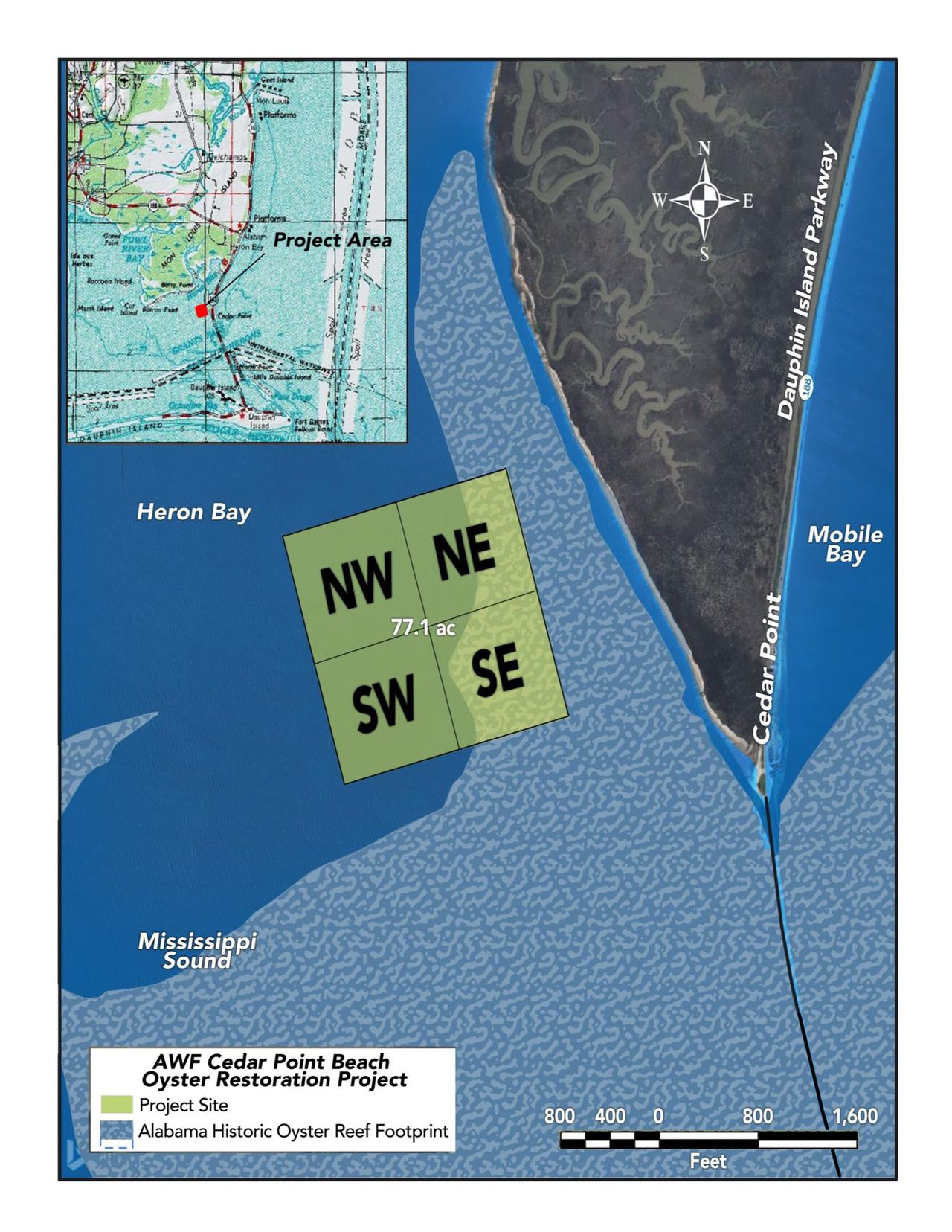North Alabama rock has date with south Alabama oysters
Q: Why would anyone think people would be interested in daily updates on a huge barge load of ordinary limestone rock making its way down the Tenn-Tom Waterway from north Alabama to the coast?
A: Oysters.
If they had you at “oysters,” here’s the deal: The Alabama Wildlife Federation (AWF), Cooper Marine and Vulcan Materials Co. have joined to ship limestone the length of the state to improve oyster habitat in Mobile Bay. The material, 6,500 tons of rock, will be used in the Cedar Point Beach Oyster Restoration Project, which affects 77 acres of water bottom in Heron Bay.
The area was once home to thriving oyster reefs and is adjacent to reefs that remain productive. The hope is that the limestone will serve as “cultch,” providing the hard, mud-free surfaces that free-floating oyster larvae need in order to settle down and develop into mature oysters.
Chris Blankenship, commissioner of the Alabama Department of Conservation and Natural Resources, said the privately-funded project complements other efforts to improve oyster survival rates and expand reef areas. Oyster harvests on Mobile Bay are a small fraction of what they were a century ago, and science shows that healthy reefs have major benefits to an ecosystem, such as filtering water and creating habitat for other animals.
In this effort, Vulcan Materials provided the limestone from its Pride Quarry in Tuscumbia and Cooper Marine provided more than $150,000 to transport it. The AWF put up $100,000 to spread it in the targeted area, matched by the Coastal Land Trust, the Jernigan Foundation, the J.L. Bedsole Foundation and PowerSouth.
“This environmental restoration effort is unique because it is funded in its entirety by private dollars,” said Tim Gothard, AWF executive director. “We are excited to see this material arrive in Mobile Bay in the next two weeks.”
“Our participation in this project echoes our commitment to Alabama’s natural resources and environmental upkeep,” said Angus Cooper, III, president of the Cooper Group. “We are proud to be a part of the partnership with Vulcan Materials Company, AWF and others in this restoration effort on the Gulf Coast.”
As the material travels downriver, the AWF will provide “continuous updates” including daily reports on its Facebook page and other social media channels.
“With continuously declining oyster populations since the 1950s, for a variety of reasons, it is imperative that we step up and make investments into the reefs oysters need to thrive so that oyster populations in Alabama waters can continue to be successful,” said Blankenship. “This project, which is fully funded through private dollars, will play a critical role in doing just that and is an integral piece to our comprehensive oyster restoration strategy.”
Related: These researchers are scaring baby oysters with crab pee. For science.
For more information on the AWF’s Oyster Restoration Fund, visit www.alabamawildlife.org.
An Alabama Wildlife Federation graphic shows the site of a privately funded oyster reef restoration project in south Mobile County.Alabama Wildlife Federation
